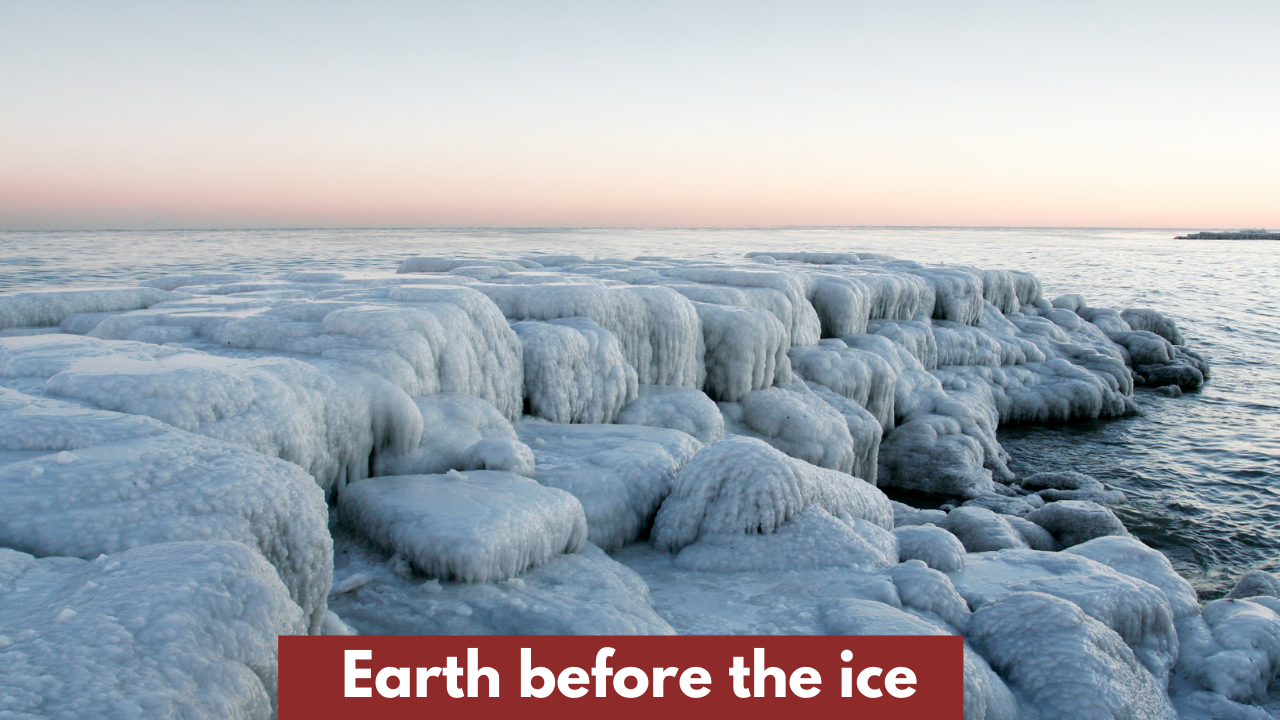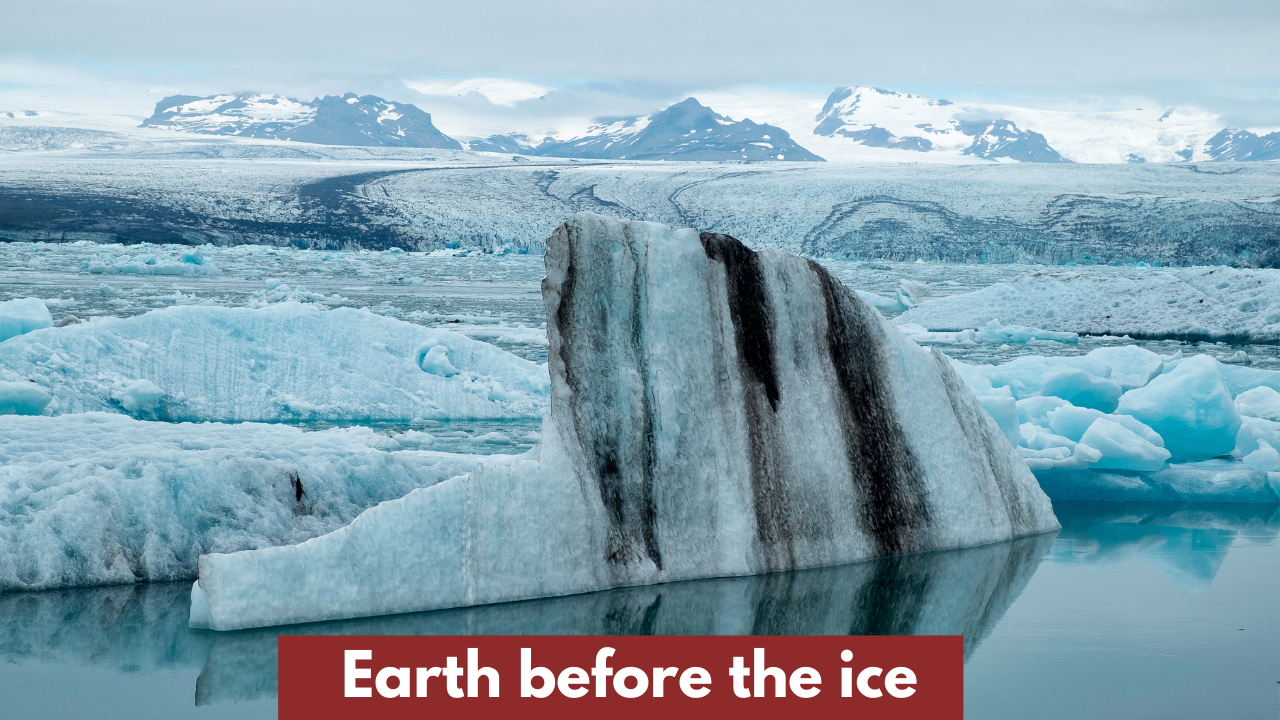On Earth before the ice ages.
Life on Earth dates back billions of years
and the planet has experienced several ice ages
throughout its history.

Here are some key points regarding life
before the most recent ice age
knows as the Pleistocene period.
Precambrian before 541 million years ago.
Early life, the earliest evidence of life
dates back to 3.5 billion years ago
with simple single-celled organisms,
such as bacteria and archaea.
Around 2.4 billion years ago,
cyanobacteria began to perform photosynthesis,
producing oxygen and significantly altering
the Earth’s atmosphere
in what is known as the Great Oxidation Event.
Around 1.8 billion years ago,
more complex cells with a nucleus appeared.
The first multicellular organisms
appeared around 1 billion years ago.
Then came the Pelazoygara,
which was between the 541 to 252 million years ago.
So around 541 million years ago,
there was a rapid diversification of life
known as the Cambrian Explosion,
leading to the appearance of the most major animal phyla.
The Pelazoygara saw a great diversity of marine life,
including trilobites,
brachiopods and the first fish.
Plants and atropods began to colonize land
around 450 million years ago,
followed by amphibians around 3 16 million years ago.
Then the first forest appeared
during the Devonian Period,
around 300 million years ago.
Next, jump up to the Mesozoic Era,
which was between 252 to 66 million years ago,
also known as the Age of Dinosaurs,
because in this era, the dinosaur dominated,
which appeared around 250 to 230 million years ago.
Also, early mammals and birds appeared
during the Mesozoic Period.
And eusperms, which are flowering plants,
evolved around 140 million years ago,
drastically changing the ecosystem.
Then came the San Joseic Era,
which was 66 million years ago, and till the present.
So after the mass extension of the dinosaurs
about 66 million years ago,
mammals had diversified
and became the dominant land animals.
Primates, including the ancestors of humans,
evolved and diversified during this period.
So the first place to see in epoch
started around 2.6 million years ago,
which is characterized by repeated glacier cycles.
During this time, many large mammals,
such as mammoths, sabertooth cats, roamed the earth.
So the next thing is the life
during the Pleistocene Ice Age.
The Pleistocene saw the evolution and spread of homomens,
including homorectus, Neanderthals,
and eventually Homo sapiens,
which are the modern humans.
Large mammals adapted to the cold environments,
such as Bully mammals, Master Dons,
and giant ground slots were prevalent.
So let’s summarize this.
Life existed long before the Ice Ages,
evolving from simple, single-celled organisms
to complex, multicellular life,
including plants, animals, eventually mammals, and humans.
The Ice Ages themselves were periods
of significant climate change
that further influenced the evolution
and distribution of life on the planet.
I hope you liked the video.
Don’t forget to subscribe to my channel,
and hit the bell icon to be notified
of videos such as this in the future.
I’ll see you next time.

